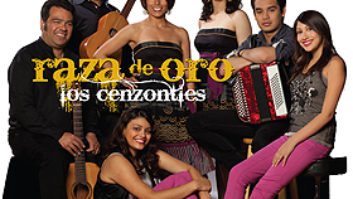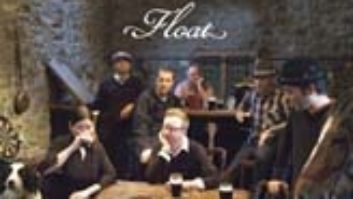After 40 years of recording and touring the world, The Chieftains have become an institution in Irish music, a musical idiom otherwise known for impermanence. The Chieftains’ stature is such that they can record and tour with almost anybody: Previous collaborators have included Roger Daltrey, Nanci Griffith, Van Morrison, Joan Osborne, Loreena McKennitt, Natalie Merchant, Joni Mitchell, Bonnie Raitt, Sinéad O’Connor, Sting and the Rolling Stones. On The Chieftains’ winter 2002 tour of the United States, they were joined by Cape Breton, Nova Scotia, fiddle great Natalie MacMaster, guitarist Jeff White (who has also played with Vince Gill and Alison Krauss) and sultry songstress Allison Moorer.
The Chieftains are Kevin Conneff on bodhrán and vocals, Derek Bell on harp and keyboards, Matt Molloy on flute, Seán Keane on fiddle, and Paddy Moloney on uilleann pipes and tin whistle. FOH engineer is Mark Horton, who has worked with the band since 1998. Mix caught up with Horton at the Paramount in Denver, Colo.
As Horton relates it, he originally started doing sound because no one else could do it. “I played guitar in bands when I was a kid, and I always had to set up the sound system because no one else could figure it out,” he explains. “When guitar gigs started drying out, the sound gigs started to appear. I started doing sound professionally in 1995. Ashley MacIsaac, a great fiddler from Cape Breton, hired me as his engineer in 1995. I’m from Nova Scotia, and I knew Ashley’s management people, so that’s how I got that gig. In the summer of 1996, Ashley toured as the opener for The Chieftains and I met Dan Cleland, who was doing sound and also acting as tour manager. Shortly thereafter, he hired me to do sound for The Chieftains. I did my first tour with them in the winter of ’98.”
TRAVELING LIGHT
After touring the world for decades, The Chieftains are welcomed back to many of the same venues year after year. What the band carries with them for sound depends on where they are. Explains Horton: “We rarely ever carry a console. In the UK we do, and sometimes in Canada we do, and in those countries we also sometimes carry our own P.A., but we go to the same venues in the States so often that we’ve gotten to know the sound companies very well, so we know what to expect. We have great relationships with the sound companies in most major cities, and we get to work in some beautiful halls, like Carnegie Hall in New York. Here in Denver, we usually play the Paramount, and we work with Bret Dowlen from Dowlen Sound, who has done the sound at the Paramount since 1984. He always brings out a Harrison or a Gamble [console] to keep me on my toes. For this Denver show, I’m working with a Harrison SM4. When we carry a console, I like to work with the Midas Heritage 3000.”
Because the band doesn’t carry their own console on their U.S. tours, Horton has become familiar with many different mixing consoles. “You have to make sure you spend enough time with the P.A. [ahead of time], because the band’s soundcheck is so fast that you have to have the P.A. the way you want it or you will get in trouble,” he notes. “I’ve used pretty much every desk that’s out, so that really helps.”
Horton keeps effects to a minimum. “I like all of the Lexicon stuff, and a lot of TC Electronic stuff. The M5000 and the M2000 are both great. You can get by with a Yamaha 990, but it doesn’t sound as rich. As far as effects, I usually go for a nice overall hall sound. A lot of the places we play, the halls sound beautiful already, so if I can get away with it, I don’t use any. Sometimes, I put a little chorus on the harp and the fiddles. Once in a while, I use delay with a guest vocalist, but I try to keep the effects to a minimum to keep that natural sound. Volume is a big issue; you have to keep the volume as low as possible.”
Horton uses little EQ. “I go for an overall hall sound,” he explains. “When I do use EQ, I set it by first playing the Sting CD, Mercury Falling, that I’ve had for years, then fine-tune it with my voice through an SM58, then I do a few more adjustments during soundcheck. The idea with the show is to try and make the people in the audience feel like they are in a living room with the band playing. I try to make it very natural-sounding.”
CHANTER, DRONE AND WHISTLE
The microphone choices and setups are various, reflecting the unusual instrumentation. “Sean’s fiddle has an ATM 35 clipped onto the bridge; it has a gooseneck, and he points it where he wants to,” explains Horton. “With Paddy’s pipes, we usually throw a Shure SM81 right at the chanter to get the best sound, about six to eight inches away. The drone is close-miked with an AKG C408. Paddy also plays his accordion into his pipe mic, and when he plays the whistle, he uses the pipe mic, except for one number when he stands at a vocal mic, a Shure SM58.
“For the flute, Matt plays into an SM58. Derek’s keyboard setup is the most complicated. We have a little Korg XD5; we are taking a stereo feed from it this year. The past few years, we ran a mono signal, but this year, he is using more sounds, so we went with a stereo feed to the DI. Then the promoter provides a Yamaha P200 at every show that we also take a stereo feed directly into a DI. For the grand piano, which is used for Derek’s solo and the finale, we use an AKG 414 over the hammers. The harp has a little AKG 419 inside the bell and pointing at the soundboard. It’s not ideal, but it’s the only way to get it up to volume in the monitors.
“On the bodhrán, we use a Sennheiser 421. Kevin uses three different sizes of drums. We like to have a space heater for the drums, especially if it is moist, to keep the skins tight and in tune. His bodhráns can’t be cranked with an Allen wrench like the newer drums; they are very old- fashioned. When he sings, he is using an SM58. Actually, all the vocal mics are SM58s.”
Because the pipes are naturally tuned to A447, the rest of the band tunes to the pipes. “When I was with Ashley’s band, the A was actually tuned to B to play with Scott’s pipes,” Horton recalls.
In contrast to The Chieftains’ traditional approach to amplifying acoustic instruments, the special guests — fiddler Natalie MacMaster and guitarist Jeff White — avail themselves of technology. “Natalie has an LR Baggs bridge pickup, and she runs that into a Shure wireless unit,” says Horton. “I take a direct XLR from that box into the P.A. Jeff has a pickup, and I also mike Jeff with an SM81.”
STEPPING OUT
The Chieftains like to have stepdancers at each show, and Donny Golden, a champion stepdancer, has toured with them for several years. For the 2002 winter tour, the band also brought two Canadians, Jon and Nathan Pilatzke. “We have Shure SM91s taped down on the stage to pick up Jon and Nathan,” explains Horton. “Sometimes, we use a Crown PCC instead. Donny Golden is wearing a wireless microphone, an inexpensive Shure system. We tape a really cheap omni lavalier from Shure to the sole of his shoe right in front of the heel; because it’s an omni, it picks up both feet really well. We run the wire up his leg, and he clips the unit to his pants.”
The Chieftains typically welcome local musicians to sit in with them during the encore, giving the end of the show the feel of a traditional Irish session in the local pub. Horton doesn’t do anything special for getting the guests in the P.A. “We have a spare vocal mic for the guest singer, and we put that in front of some people, and we might throw down Kevin’s vocal mics. Some years, we had choirs and we had two condenser mics of them, and if it’s friends of the band or name musicians, we might throw out an extra DI or a special mic; but, normally, we don’t bother. It’s just a fun thing for people to get up and play with The Chieftains.”
Essential to a good overall mix is the balance of fiddle and flute. Explains Horton, “Sean’s fiddle is very bright, and Nat’s is a little fatter. When they play together, I pan them slightly to give them their own space; Sean goes left, and Natalie goes right. Her gain is set a lot lower than Sean’s to balance her having a pickup. That’s why I have them play together during soundcheck — to check their levels and make sure both are even and clear in the mix. The real trick is to make sure that you can hear the flute when the fiddles are playing the same line. I know the set, so I know when the fiddles come in and when I will have to turn the flute up or down to compensate. Sometimes when we play outside, it can be difficult to get the volume of the instruments up in the P.A. The louder the show, the more you have to gut the lows. The instruments resonate at those low frequencies, so you end up gutting all the warmth out of the P.A.”
MIXING MONITORS FROM FOH
Horton also runs the monitor setup from FOH, with a little assistance from tour manager Cleland, who did sound for the band before Horton joined. Of the four monitor mixes, the first goes to two outside wedges and is made up of an overall band wash. “It has everything in it except for Kevin’s drum, which is loud enough onstage,” says Horton. Mix two is dedicated to guest singer Alison Moorer and has only her voice and “a lot of the guitar.” Mix three is Kevin Conneff’s bodhrán and vocals mix, and is similar to mix one except that he has his voice very loud in it, along with his drum and lots of guitar. Mix four is the guitarist’s, and is an overall mix with some drum in it.
“For the next tour, I think we are going to get a hot spot monitor for Derek, because he sometimes has trouble hearing the organ,” adds Horton. “The piano has a built-in speaker so it’s fine, but he sometimes has trouble hearing the organ. The harp is in the monitor mix, and he is closer to the monitor when he plays the harp. Derek is brilliant; he could probably do the entire show without hearing anything he plays, but it’s better that he knows what’s going on. I can listen to the mixes on headphones; they aren’t very loud, so we generally don’t run into any feedback problems. If the guys need any more, they signal — Dan is at the side of the stage and he gets me on the radio. They are really very traditional; they barely like having microphones, so they see no need for in-ears [IEMs] or anything fancy as far as the mix.”
Candace Horgan is a freelance writer based out of the Denver area.



